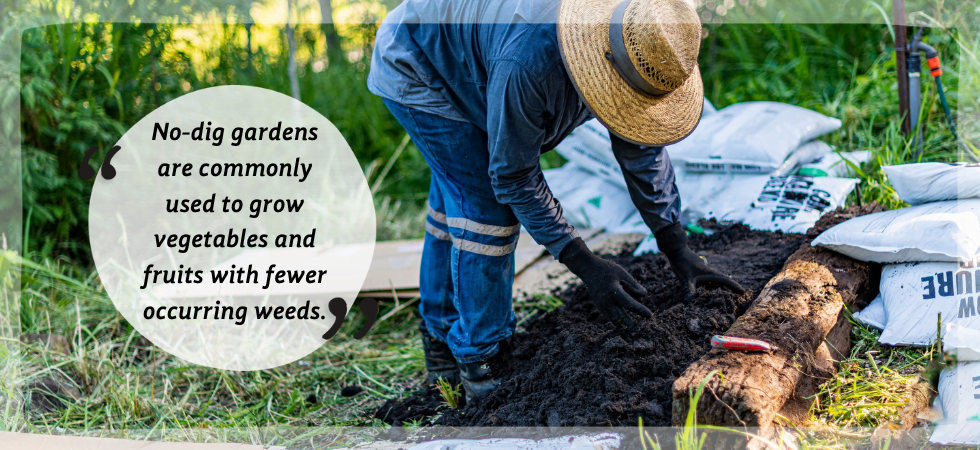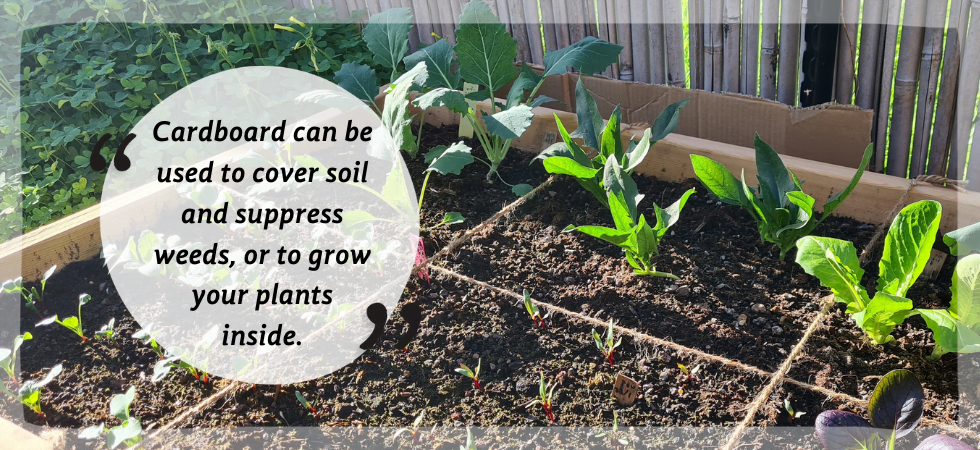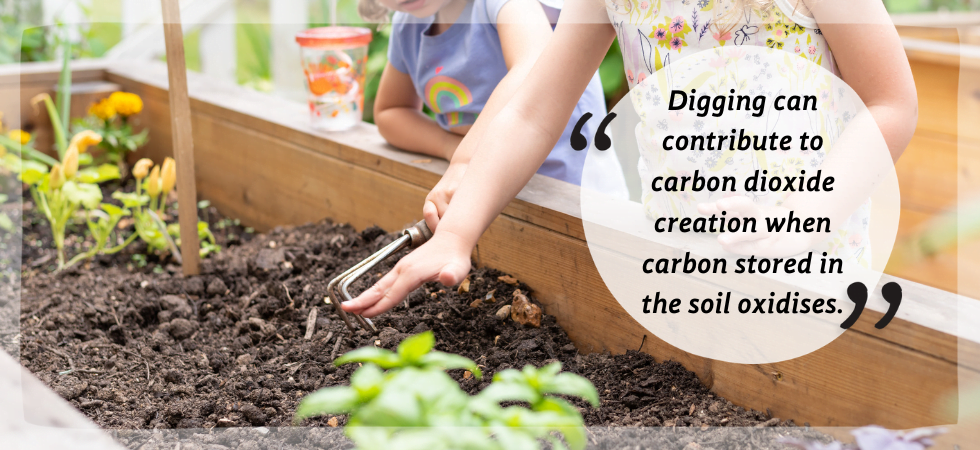No-Dig Gardening For Beginners
No Dig gardening for beginners
Searching for an easier way to nurture your garden? One with less weeding, watering and back-breaking work? Want to swap digging for mulching? Then read on for our top tips on no dig gardening for beginners.
What is no dig gardening?
Digging over vegetable plots and flower borders has been ‘the done thing’ for decades, if not centuries. Maybe it’s because gardening developed from farming, where fields were ploughed over every year between crops?
Anyway, in 1981 gardening genius Charles Dowding rebelled with his no dig method. Take it away Charles!
“No dig aims for minimal disturbance of the soil. Because it’s such a healthy way of growing and the soil health stays so good from not being disturbed, you get a stronger growth of plants.”
– Charles Dowding
You can follow his Instagram account for more tips.

Can you dig it?
Ever bought mycorrhizal fungi from the garden centre? It’s the stuff you sprinkle over bought-in plant roots to help them ‘settle in’ to your soil. Unfortunately digging plunges your own soil’s naturally-occurring version away from root level.
Your spade can also bring weed roots and seeds up from the depths of the soil. Plus digging allows carbon stored within your soil to oxidise into climate change baddie carbon dioxide.
More no dig bonuses
• Earlier harvests – in early spring undug soil is warmer than dug soil, which encourages plant growth
• Bigger vegetables – trials have proven no dig creates better harvests for everything apart from potatoes
• Fewer weeds – mulching, a key process in no dig, helps suppress weeds
• Uses less water – the magic of mulching means you’ll need to water less
How to start no dig gardening
The beauty of no dig gardening is anyone can try it, anywhere. And you have millions of willing helpers!
You see, organisms within the soil pull down mulch from above. They then break down any nutrients into components which plant roots will lap up. By moving around in the soil to do this, the organisms create tiny channels which help with water drainage and keeping soil structures light and airy. So it’s a win-win!
1. Weeding it out
Think of your future no-dig bed as a layer cake. At the bottom is soil, then a layer of compost mulch, with your plants being the icing on the cake. Coco Chip, our 100% natural coir mulch bark blend, is great for no-dig.
To give your plants the best start, you don’t want them competing with weeds already in the soil. To get rid of the competition, why not try the following no-dig hack?

No dig garden using cardboard
If you’ve a load of stubborn weeds, reach for the recycling pile and use cardboard to cover the soil. It will suppress any weed growth without any digging. Told you Charles was a genius!
2. No dig garden compost mulch
So you’ve prepared the first layer. Next you need to add 5cm compost as a mulch. Or 15 – 20cm thick if you’re creating a brand new bed. Spread the compost mulch either on top of your weed-free soil or the cardboard. Then firm it down.
If you’re creating a new bed: wait six months
Yep, it’s frustrating but that’s how long it will take for the majority of the weeds to die off. Plus you need to give organisms the time to do their stuff.
3. Sow or plant as usual
You can plant directly into the compost layer. Over time, it will decompose into the soil below and get mixed up by the worms.
4. Be vigilant
No dig doesn’t eliminate weeds completely. Just use a trowel to take them out. Regular checking for sprouting weeds can be beneficial for staying on top of weeds, though your mulching should help with prevention!
4. Add more mulch in the autumn
Once you’ve brought in the harvest, add another layer of compost mulch. Don’t be stingy! You’ll need 3 – 5cm on top to keep the soil temperature warm enough for an early harvest.
Raising winter crops? Then mulch in early spring instead.
Rest and repeat
Over the winter, leave the beds alone. Then come the next spring, start planting up. Nothing more exciting than preparing for your next season of growing and harvesting!

Coconut coir for vegetables
Our coconut coir compost makes a fantastic growing medium for vegetables. Benefits include:
• Less time watering as coir compost holds on to water better than other composts
• Options to buy with nutrients mixed in or add your own
Tip: our biodegradable coir propogation pots allow you to plant vegetable seedlings, pot and all, into a larger container. The organic casing then breaks down naturally.
Tips from the ‘Green Gardeners Guild’ online advice library
On the lookout for more tips and hints? Our blogs are packed with advice:
• Inspirational gardening trends
• Mulching as part of winter gardening: a guide
Have you ditched the dig?
Do you want to encourage beginners to join the no dig gardening movement? Then please post your pictures and tag @cocoandcoir on Instagram. We’ll credit you for any images we use and you’ll also be in with a chance to win some Coco & Coir goodies for your sustainable garden.










